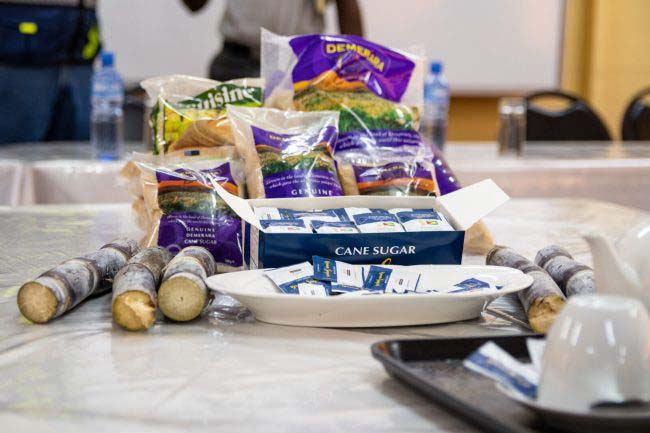With emphasis on the marketing of packaged sugar, the Guyana Sugar Corporation (GuySuCo) has been able to earn over US$1.7 billion in revenue from the venture.
A company source explained that the revenue generated has contributed positively to the industry as GuySuCo was able to stay afloat after devastating floods last year.
Stabroek News understands that with new markets in the eastern Caribbean, North America, and Suriname, the packaged sugar is much more preferred than the bulk sugar sold to the European Union (EU) market.
“The Corporation’s strategy is to move the industry away from the EU bulk market that procures sugar at an average price of US$400 per metric tonne (MT) when compared to US$600 per MT in the Caribbean market.”
According to the source, this year, GuySuCo as part of its Strategic Management Plan is pursuing new markets with its packaged sugar.
For 2022, the corporation is aiming to produce some 66,000 MT of sugar with 21,000 in the first crop and the remainder in the second crop.
Additionally, despite price increases on daily consumed commodities, Stabroek News was told that the corporation has no intention of increasing the price for sugar on the local market.
GuySuCo is adopting a “forward-looking” marketing strategy in an effort to advance the sale of its value-added packaged sugar (Demerara Gold and Enmore Crystals brands) with the primary focus being the local and CARICOM markets, the company said in a statement last December.
The Department of Public Information has reported Chief Executive Officer Sasenarine Singh as saying that the corporation would be looking to market the sachets to the tourism market, the airline industry and the wider corporate world.
Currently, GuySuCo’s sugar sachets sell for US$3,000 per MT, Cuisine for US$679 per MT and Demerara Gold for US$779 per MT.
However, in spite of the revenue generation, the corporation’s overall production faced a severe blow due to months-long flooding in cane cultivations last year.
After what was described as the worst flooding the sugar belt has experienced in 40 years, pre-audited production results were reported at 58,025 MT in 2021 compared to 88,890 MT in 2020.
According to a December release, at Albion, where 50% of the production was programmed to be made, the mortality rate for the standing canes planned to be harvested for the 1st Crop of 2022 is estimated at 80% due to the floods. On the Berbice Estates, where more than 77% of the production occurs, the rainfall in 2021 was 72% more than the previous year. In addition, despite losing some 35% of the standing cane for the 2nd Crop of 2021 as a result of the flood, the corporation stated that it still managed to meet local market demand for 2021.
Singh said then, “Despite the challenges from this unprecedented floods, the worst in 40 years on the sugar belt, GuySuCo was able to soldier on and continue production soon after these devastating floods to beat the prediction in September 2021 that the industry will not pass the 50,000 MT mark. GuySuCo pre-audit production as at December 23, 2021, is 58,025 MT.” The CEO added, “The Agriculture Team was able to strategise and re-focus on rehabilitating the damaged fields. Some 4,300 hectares of sugar canes were destroyed across the industry [this land is equivalent to over 52,000 house lots] and the industry was able to rehabilitate some 38% of those damaged cultivation in 2021. I have seen nothing but champions by their thousands across the sugar belt who over the last year worked tirelessly to drain some 4.5 million tonnes of water from the flooded lands every day during those 65 days [that is water that could fill 2,000 Olympic sized swimming pools every day]. This herculean effort allowed the industry to save the remaining surviving cane and secure a 2nd Crop for 2022.”
The company is currently finalising its Five-Year Strategic Plan and is expected to present it to the Board of Directors in February.






